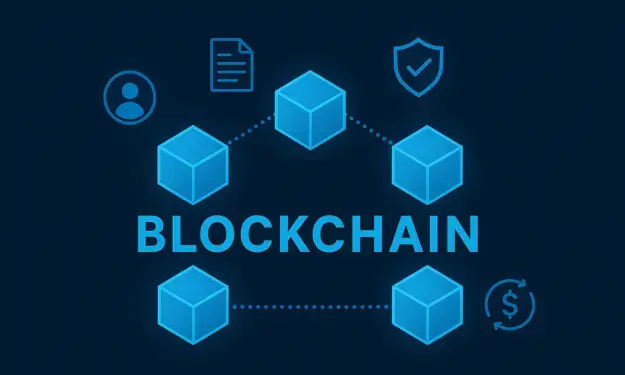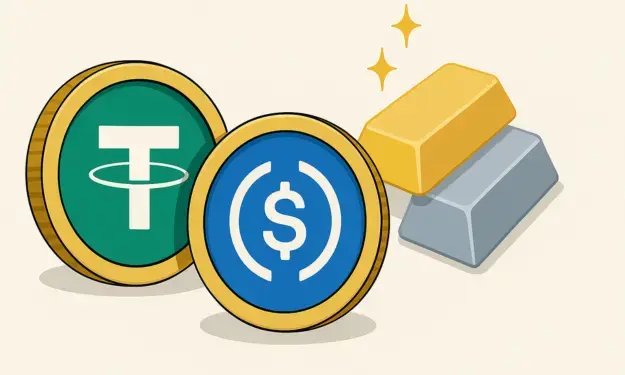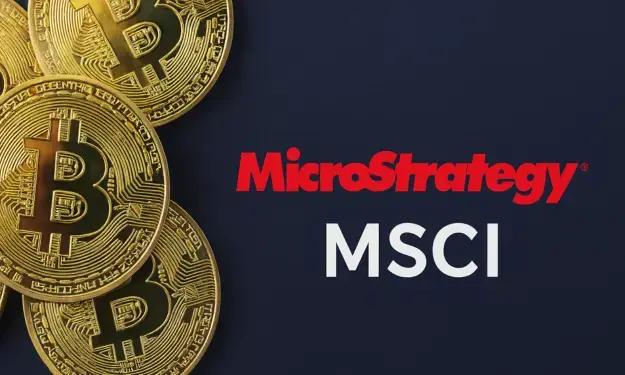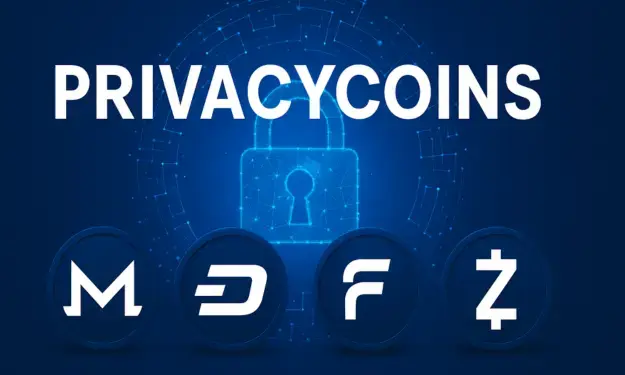Publication date: January 2, 2025
Stacks (STX) was launched in 2017 and is a blockchain project that extends the capabilities of Bitcoin. It adds smart contracts and decentralized applications (dApps) to the Bitcoin network. This can be done without compromising Bitcoin's security and reliability. Stacks offers developers and investors new opportunities to use blockchain technology.
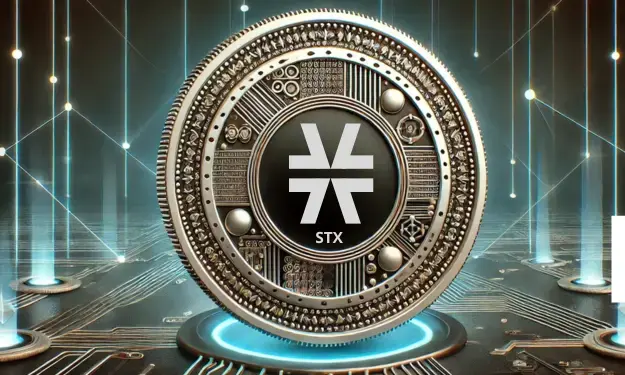
How does Stacks work?
Stacks is built on a separate blockchain that uses the unique Proof of Transfer (PoX) consensus mechanism. Instead of energy-intensive mining, PoX uses Bitcoin as a base layer to ensure the security and reliability of the Stacks network.
With Stacks, developers can write smart contracts in Clarity, a programming language designed to provide predictability and transparency. These smart contracts are executed on the Stacks blockchain but operate directly with Bitcoin transactions, allowing users to take advantage of Bitcoin's robust infrastructure. This opens up a world of possibilities, such as DeFi applications, NFTs, and decentralized identities, all supported by the Bitcoin blockchain.
History of Stacks
Stacks began in 2017 as Blockstack, with a vision to decentralize the Internet and give users more control over their data. In 2019, the project raised $23 million through a regulated token offering - a first in the blockchain industry.
In January 2021, Stacks officially launched its mainnet and renamed the project to Stacks (STX). The introduction of the PoX mechanism and integration with Bitcoin marked an important milestone. Since then, Stacks has continued to innovate, with ongoing upgrades and a growing community of developers building new applications on the platform.
Recent Developments
Stacks has made several notable strides in 2024:
- Bitcoin Unleashed 2.0: This event highlighted the synergy between Stacks and Bitcoin, announcing new tools and integrations.
- Adoption of sBTC: A major breakthrough introducing a Bitcoin-native stablecoin designed to boost DeFi applications on the Stacks ecosystem.
- Growth in DeFi and NFTs: The number of dApps and NFT marketplaces on Stacks continues to grow, with projects such as Boom and Arkadiko demonstrating the network's capabilities.
In 2024, Stacks reached a milestone of 500 million STX tokens in circulation, reflecting the community's confidence in the platform.
Choose the development of Stacks
The share price of Stacks (STX) has fluctuated widely over the years. In the first half of 2021, the price rose sharply due to the launch of the main net and growing interest in smart contracts on Bitcoin. The value peaked at $2.84 but dropped back to around $0.50 in June of that year. Still, confidence in the project remained. In late 2021, the price shot up again to a record $3.25, all within a few months.
Shortly after reaching a record high, the value of STX plummeted, resulting in a recovery period of more than two years to return to its original level. In early 2023, the price hovered around $0.20, but by the end of that year, the cryptocurrency began an ascent, reaching a new record high of $3.85 in April 2024.
As seen in the chart below, the price dropped significantly after the record, highlighting the volatile nature of STX in 2024. In early December 2024, the value peaked again around $3. This rise was driven by positive developments around sBTC and a growing acceptance of Stacks among both retail and institutional investors.
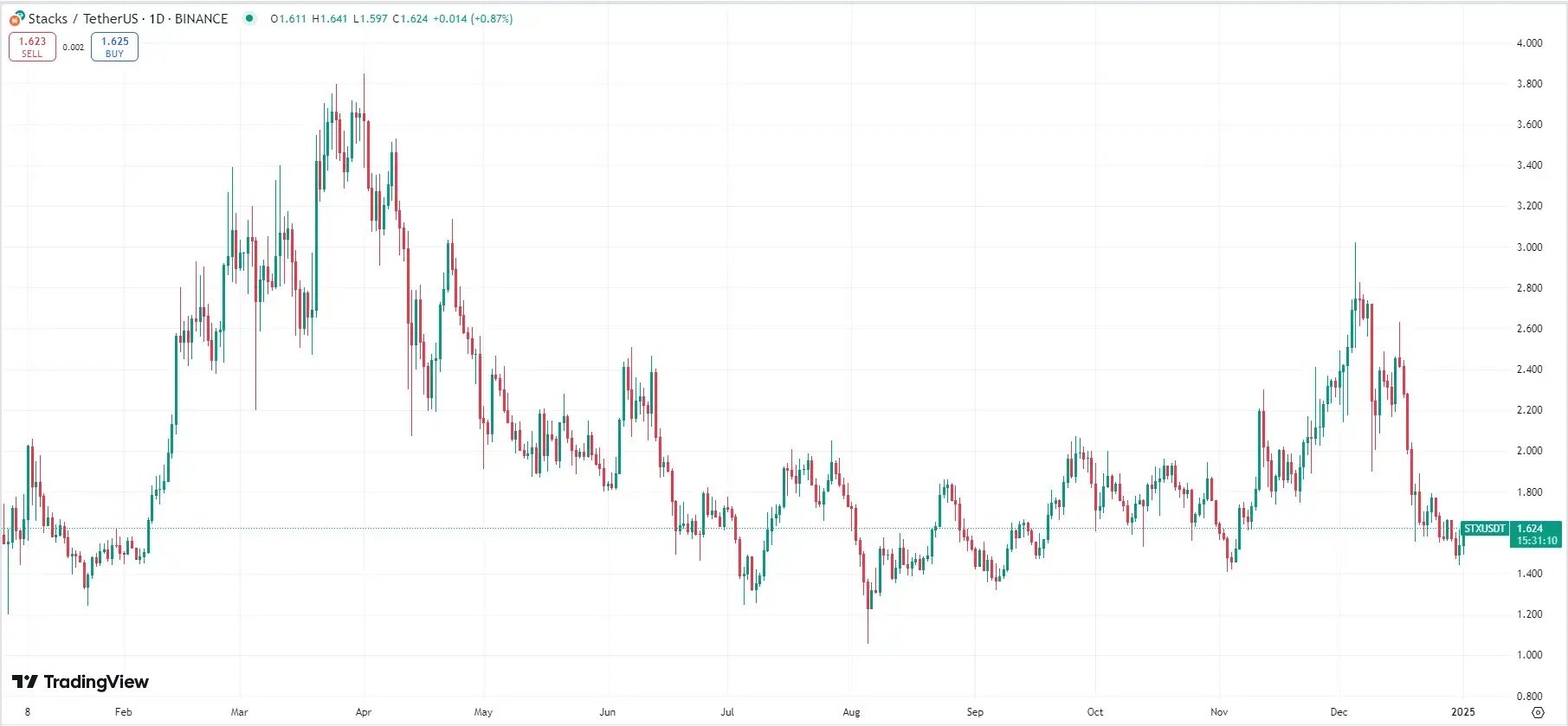
What could drive up the price of Stacks?
1. Adoption of Bitcoin DeFi: Stacks allow building DeFi applications with Bitcoin, which is a big advantage.
2. Technological advances: Further improvements in the PoX mechanism and integration with Bitcoin may increase confidence in Stacks.
3. Community growth: An active and growing developer community can lead to more innovative dApps and wider adoption of the platform.

.svg)







